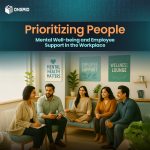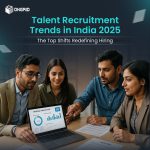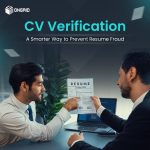Table of Contents
ToggleAt OnGrid, we’ve seen our fair share of shocking background verification cases. But every now and then, something comes along that makes even seasoned verification professionals pause.
This is one of those stories.
Must Read: EPFO and UAN: Key Tools for Efficient Employment Verification
The Case That Felt Like a Movie
What began as a routine Employment History Check (EHC) turned into an eye-opening timeline of digital deception. One candidate. Seven years. A jaw-dropping 141 employers on record.
Let’s break it down.
The Timeline of Audacity

2018 – The candidate begins her professional journey.
2020 – The world goes remote during COVID. She goes multi-employed—joining 50 new companies in a single year.
2021 – She scales back slightly… and still manages to rack up 21 additional employers.
Simultaneous employment? At one point, she was on payroll at 10 companies at the same time.
This wasn’t just freelancing or contract work—it included full-time roles, some with big names, fast-scaling startups, and even established MNCs.
And yet, on the surface, everything looked clean. A single, polished resume. Confident interviews. No obvious red flags—until we ran a deep EHC.
Why This Case Matters More Than Ever
Stories like this may sound extreme, even amusing. But they reveal something much more serious:
Moonlighting and employment fraud are real risks in the age of remote work and digital onboarding.
Financial impact – Companies pay salaries to employees who are overcommitted or not truly available.
Security risks – Employees working for competitors simultaneously pose confidentiality and IP threats.
Performance issues – Divided attention = poor output, missed deadlines, and lack of ownership.
Compliance – Especially in regulated sectors like BFSI, healthcare, and IT services, simultaneous employment could result in audit flags and legal issues.
What is an Employment History Check (EHC)?

OnGrid’s Employment History Check (EHC) is an API-first, scalable solution that uncovers exactly this kind of fraud.
It verifies:
Prior employers
Duration of employment
Overlaps or inconsistencies
Exit status
In many cases, it also helps flag multiple current jobs or hidden gig stints that could be affecting performance and compliance.
Whether you’re hiring someone new or auditing your current workforce—EHC provides the clarity you need.
Who Needs to Worry About Moonlighting?
You might think: “This is rare. Surely, it won’t happen in my organization.”
Think again.
Moonlighting can impact any company, especially:
Startups with high growth and lean teams
Enterprises offering remote or hybrid roles
IT services, consulting, and project-based firms
Fintech and BPOs working with sensitive data
Organizations with shift-based or flexible schedules
What You Can Do Right Now
Here’s how you can stay ahead of the curve:
Conduct EHC on all new hires — It’s a quick, scalable way to check employment history and spot inconsistencies before they become problems.
Reverify existing employees — Particularly if they’re in high-trust roles or have switched departments. You may be surprised at what comes up.
Build moonlighting checks into your remote work policy — And make sure teams know that verification isn’t about mistrust, it’s about maintaining standards and fairness.
Final Thoughts
Hiring in 2025 and beyond means navigating new realities. Remote work, gig culture, and side hustles are here to stay.
But so is your right to protect your business, your culture, and your clients.
Don’t let moonlighting sneak under your radar.
Let OnGrid’s Moonlighting Check (EHC) shine a light—before it becomes a headline.





Leave a Reply